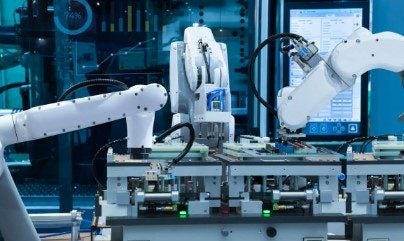
As advanced technological applications in vehicle designs grow, there is much talk of the rise of the software-defined vehicle (SDV). How will this trend play out in terms of scalability and where are the opportunities? We hear from Andreas Heim, Vice President of Engineering, Automotive at Flex, a manufacturing services specialist.
As software-defined vehicles (SDVs) drive the future of mobility, what new opportunities does this offer automakers?
A key benefit of this new software-based approach is the simplicity that comes with the vehicle architectures required to support it. Legacy vehicles with hundreds of discrete ECUs have limitations in computing power and require significant wiring infrastructure in areas where space is often severely limited. Software-defined vehicles, on the other hand, use centralised vehicle architectures with fewer, but much more powerful scalable computing solutions. This enables faster, updatable, and more fully featured software while greatly reducing vehicle wiring and overall system component counts.
As software-defined vehicles become the norm, we can point to new opportunities for OEMs that will only grow over time. For example, OEMs can deliver differentiated and customisable experiences for consumers to build affinity, accommodate preferences, and capture long-term brand loyalty. OTA updates will help consumers avoid time consuming trips to the dealership for repairs that previously required dealer support. And new digital features, updates and content can be sent directly to the vehicle to ensure ongoing user engagement and novelty.
This is a factor highlighted by Boston Consulting Group, who report that customers tend to stick with brands once they adopt digital services and customised software. It also predicts that revenue from these services is set to rise to $248 Billion by 2030, with consumer-facing applications contributing the majority at $209 Billion.
What strategic changes must automakers implement to overcome challenges and deliver software-defined vehicles at scale?
Software-defined vehicles are complex. To succeed, automakers must build up their competencies to deliver the level of automotive technology, software, and content needed to create brand-defining experiences.
That is why we see many automakers expanding their software and systems integration capabilities to create their own intellectual property that differentiate their products and services.
This has created an interesting crossroads across different players as automakers and their networks of suppliers work together to achieve seamless systems integration. To successfully scale software-defined vehicles, automakers must reconfigure existing business models and take a more collaborative approach so that the industry can meet the level of complexity and capabilities that the software transition journey demands. We must nurture a more collaborative automotive ecosystem underpinned by close partnerships to develop and scale complete systems and solutions.
Are you seeing progress in partnerships between automakers and their networks of suppliers?
We have seen progress – take, for example, the supply agreements we have seen automakers make with semiconductor companies. However, we’re far from the level of collaboration needed. Our industry must accelerate the openness of the automotive ecosystem to scale software-defined vehicles and achieve the promise of next-generation mobility.
To accelerate innovation and optimise engineering resources, automakers must identify synergies and begin collaborating on automotive technology and non-differentiating features such as middleware platforms. According to S&P Global Mobility, software research and development spend is forecasted to grow to $47 billion by 2028, with only half of spend today allocated to true differentiating features such as OTA software and AI software frameworks.
This presents an opportunity for the automotive industry to embrace cross- and inter-industry partnerships that enable automakers to move faster and focus their investments on unique, brand-defining customer experiences instead of duplicating time and resources.
Focusing on partnerships and potential shared building blocks will empower automakers to respond faster to shifting market conditions, which is crucial in a quickly transforming investment landscape.
Are there any valuable lessons or best practices from other industries Flex supports that could be applied to automotive?
Having worked at several traditional Tier 1 automotive suppliers, one of the things I like most about working at Flex is our cross-industry technology and expertise. This cross-industry view allows us to understand technology and value chain trends that span multiple industries, including automotive, industrial, cloud, healthcare, and consumer sectors.
And that perspective is why we believe that it’s time for the automotive industry to adopt new business models in how automakers and suppliers work together. Let’s look at the cloud industry as an example. You see many news headlines on explosive data centre infrastructure growth, and questions on where power is going to come from to keep pace with the insatiable appetite for advanced computing that enables AI.
SDVs require the same rapid increase in requirements for power and compute. That is why at Flex, we say the future architecture of the software-defined vehicle is an “edge data centre on wheels.” Yet what we see with our customers in the data centre space is that they have accelerated their innovation curve with an evolved approach to partnering with their supply base ecosystem.
We see supplier partner alignment with chipmakers, software companies, design, and manufacturing partners four times earlier than even a few years ago to define features, performance requirements, and secure supply continuity.
So, my message regarding best practices that automotive should adopt from other industries goes back to collaboration. We must work to accelerate cooperation much earlier in the cycle – by years not months and recognise we can benefit from doing even more work together.
What is an example of this next-generation mobility ecosystem in action?
One example of how the next-generation ecosystem accelerates innovation is Flex’s collaboration with NVIDIA to develop an automotive computing platform that makes ADAS and the path to autonomous driving more accessible.
During the project design process, we engaged a diverse subset of automakers that jointly invested in the development effort. While these automakers were aware they were part of a cohort, the identities of their peers were not disclosed, enabling true open collaboration. The pooled investment from these automakers helped fund development, while their feedback accelerated the validation of the solution.




